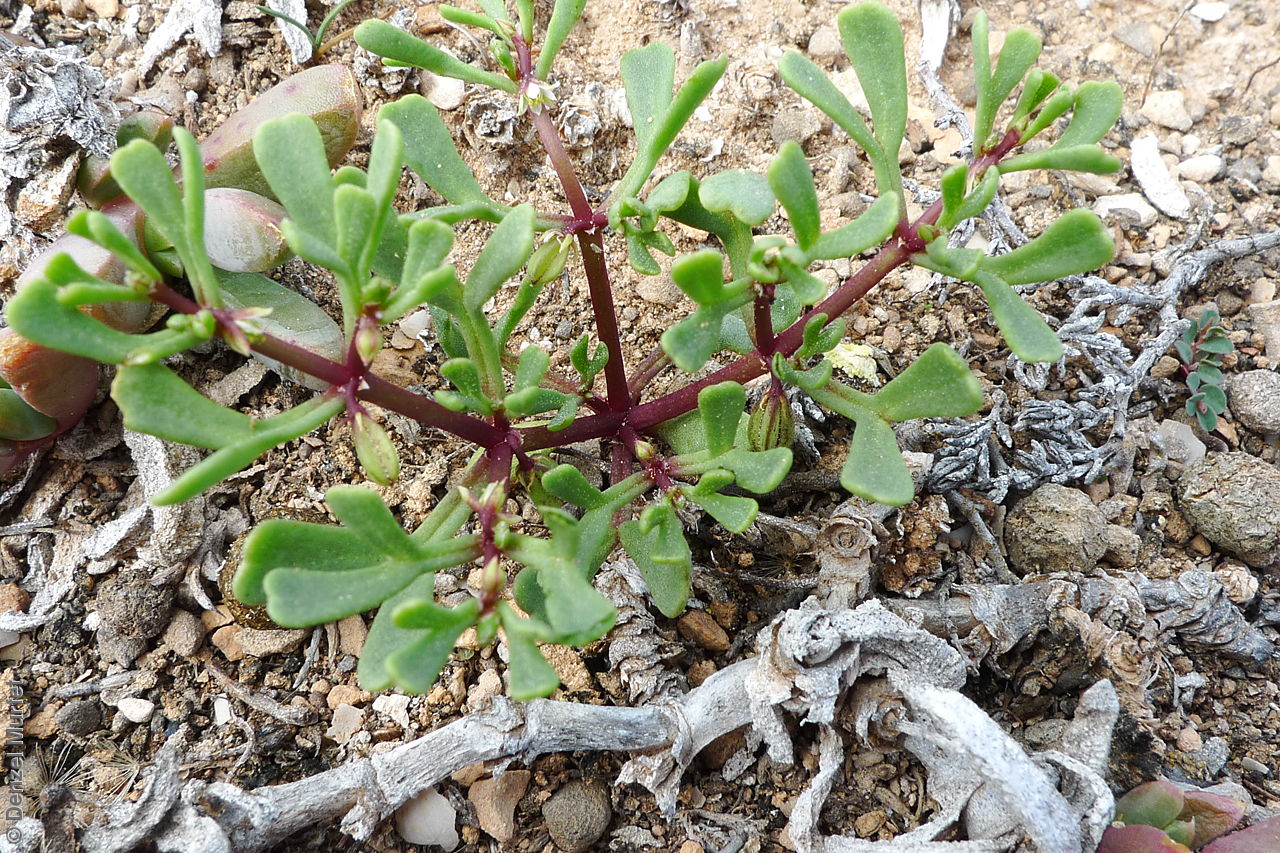
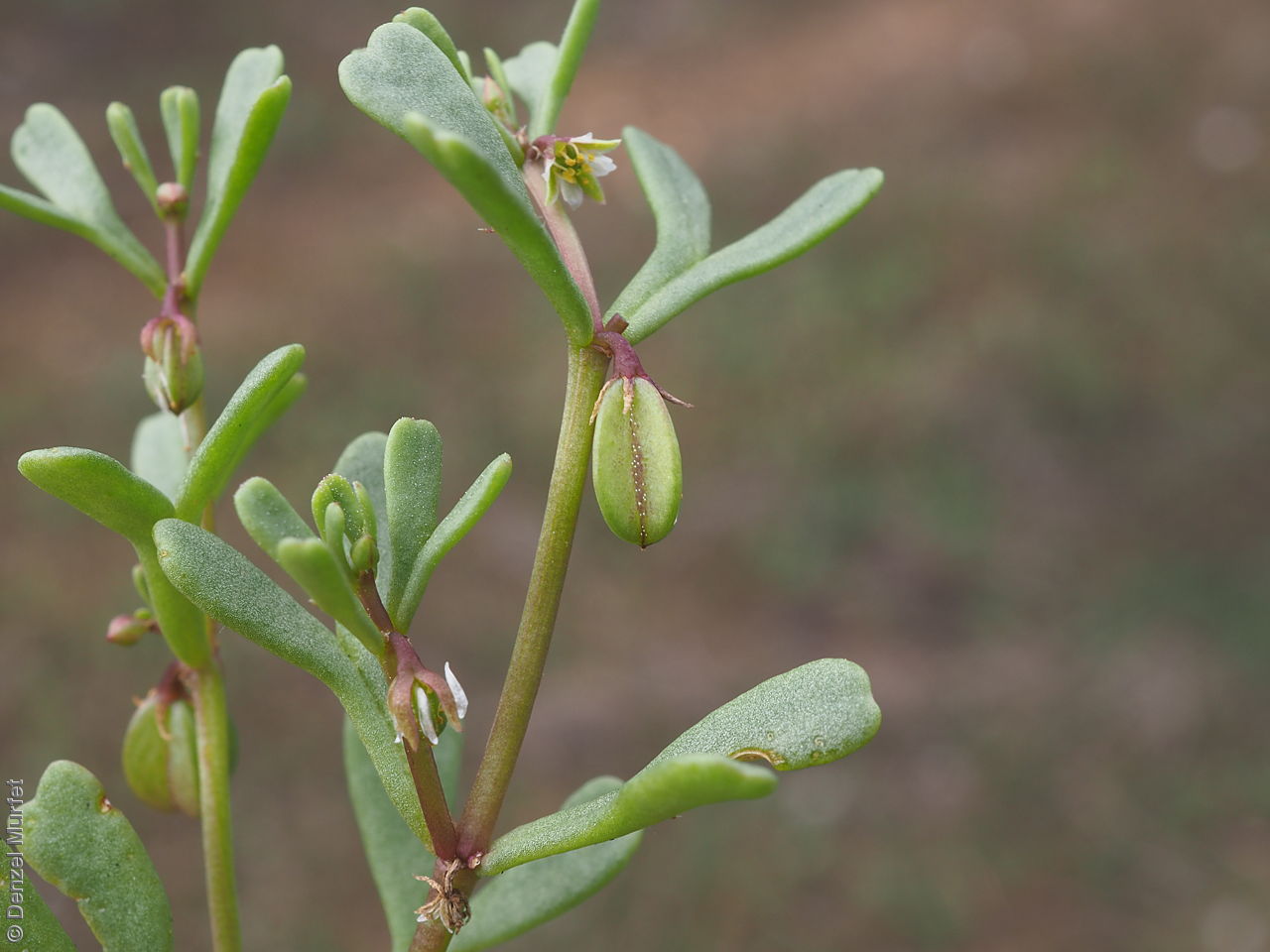
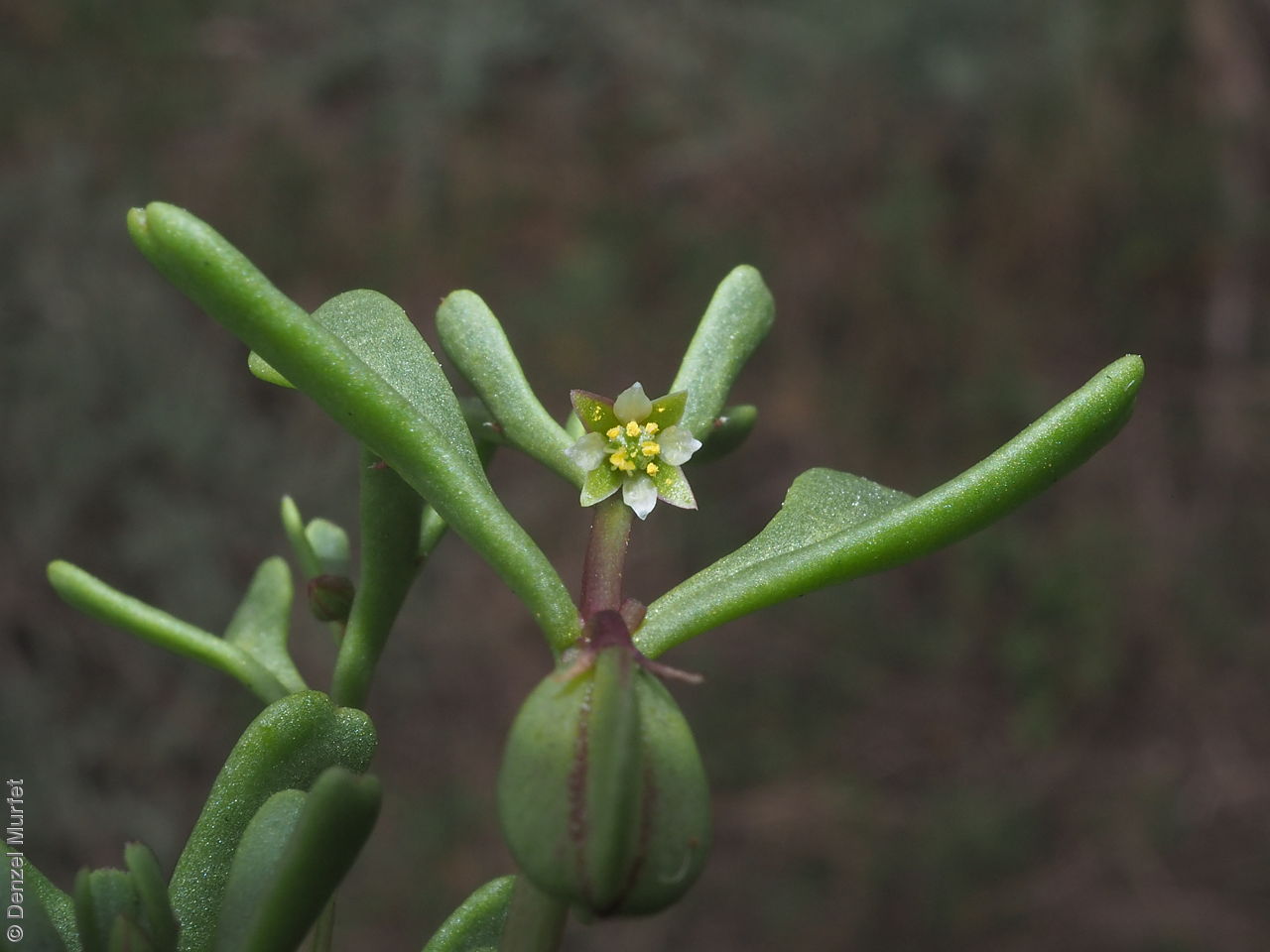
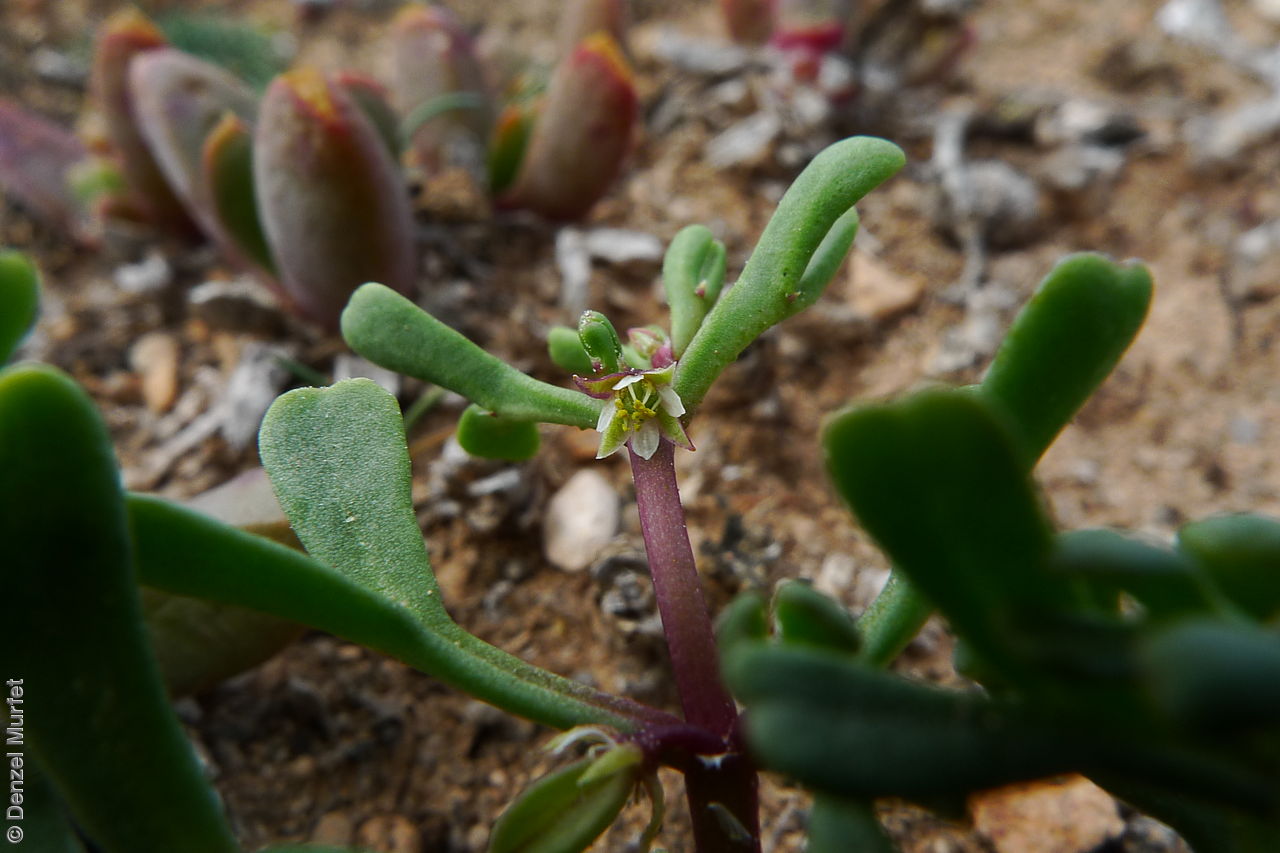
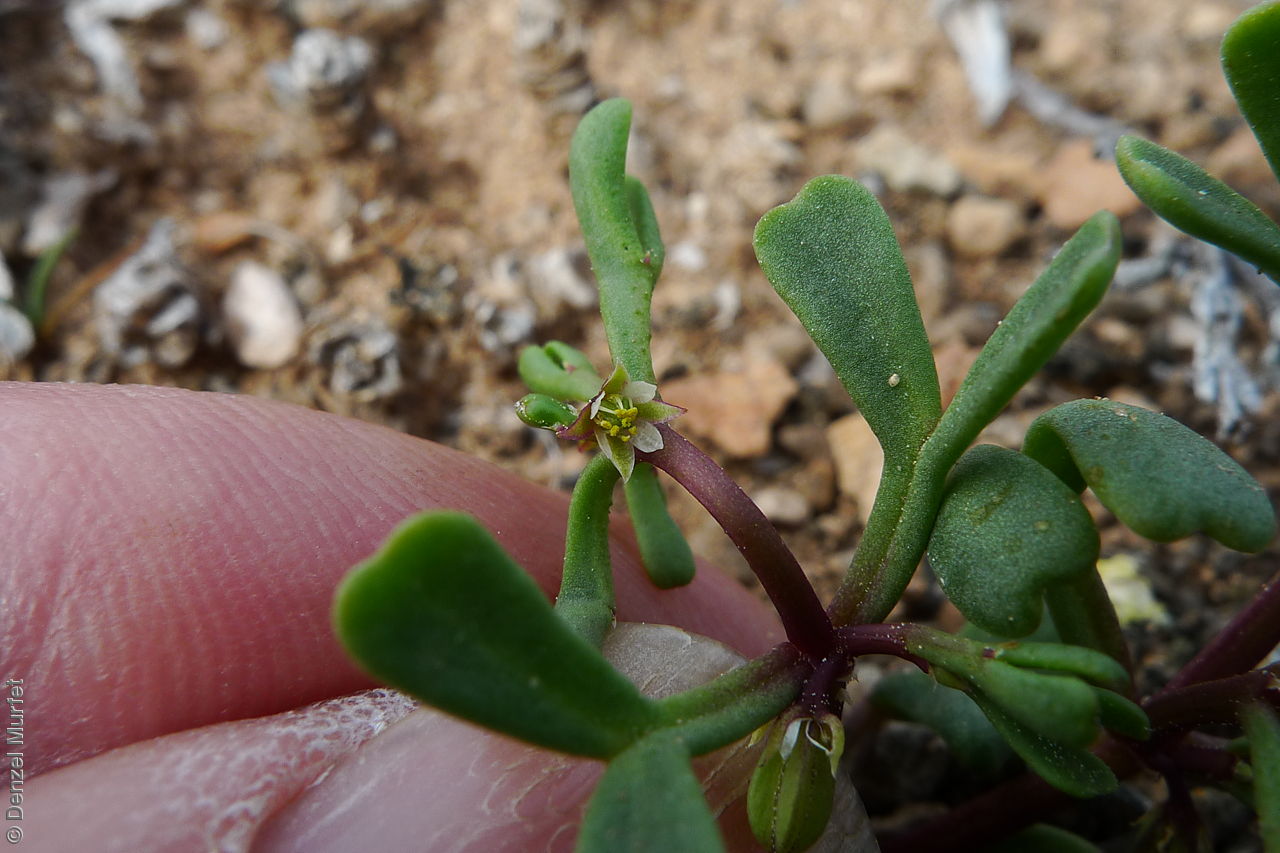


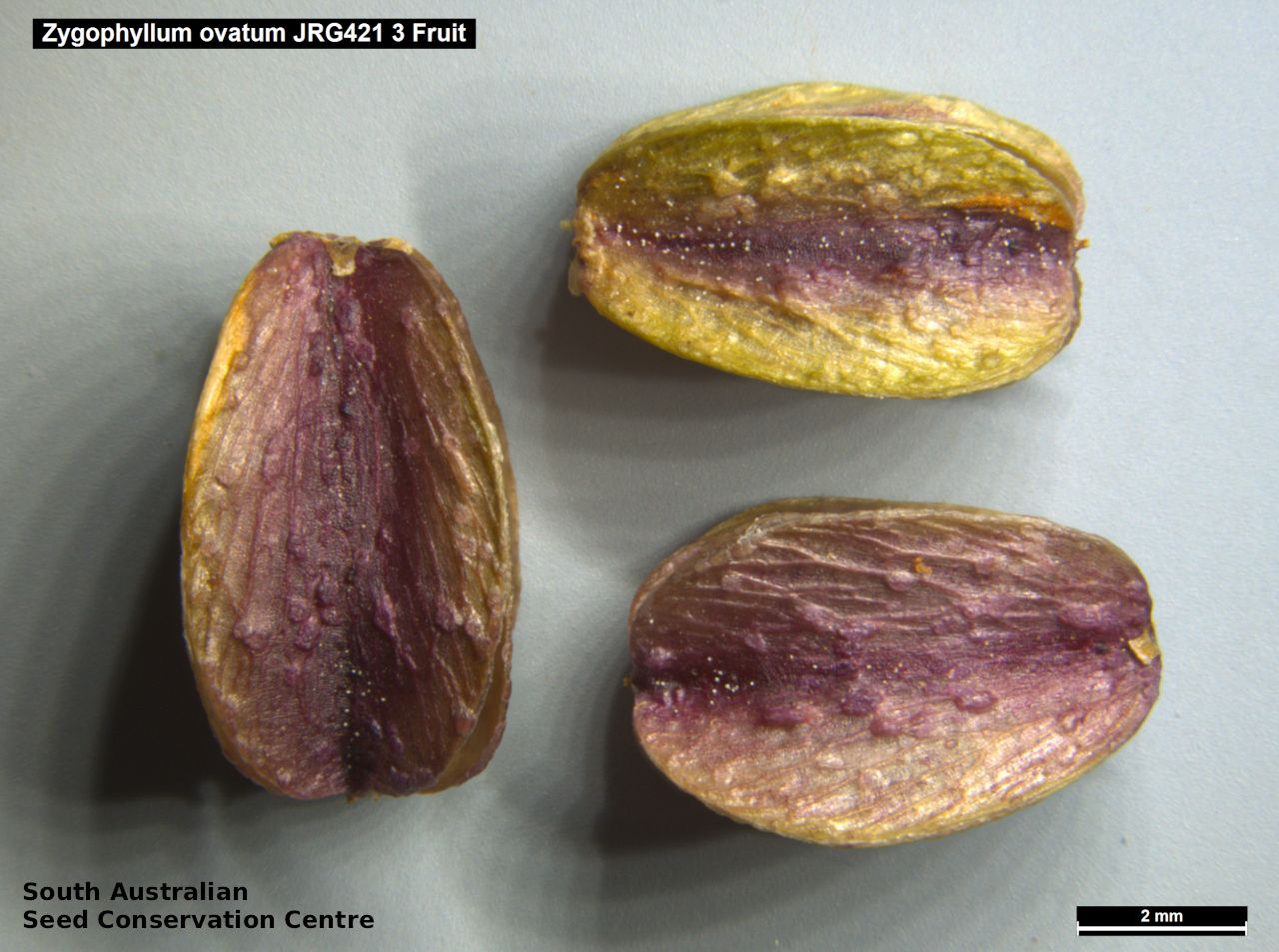
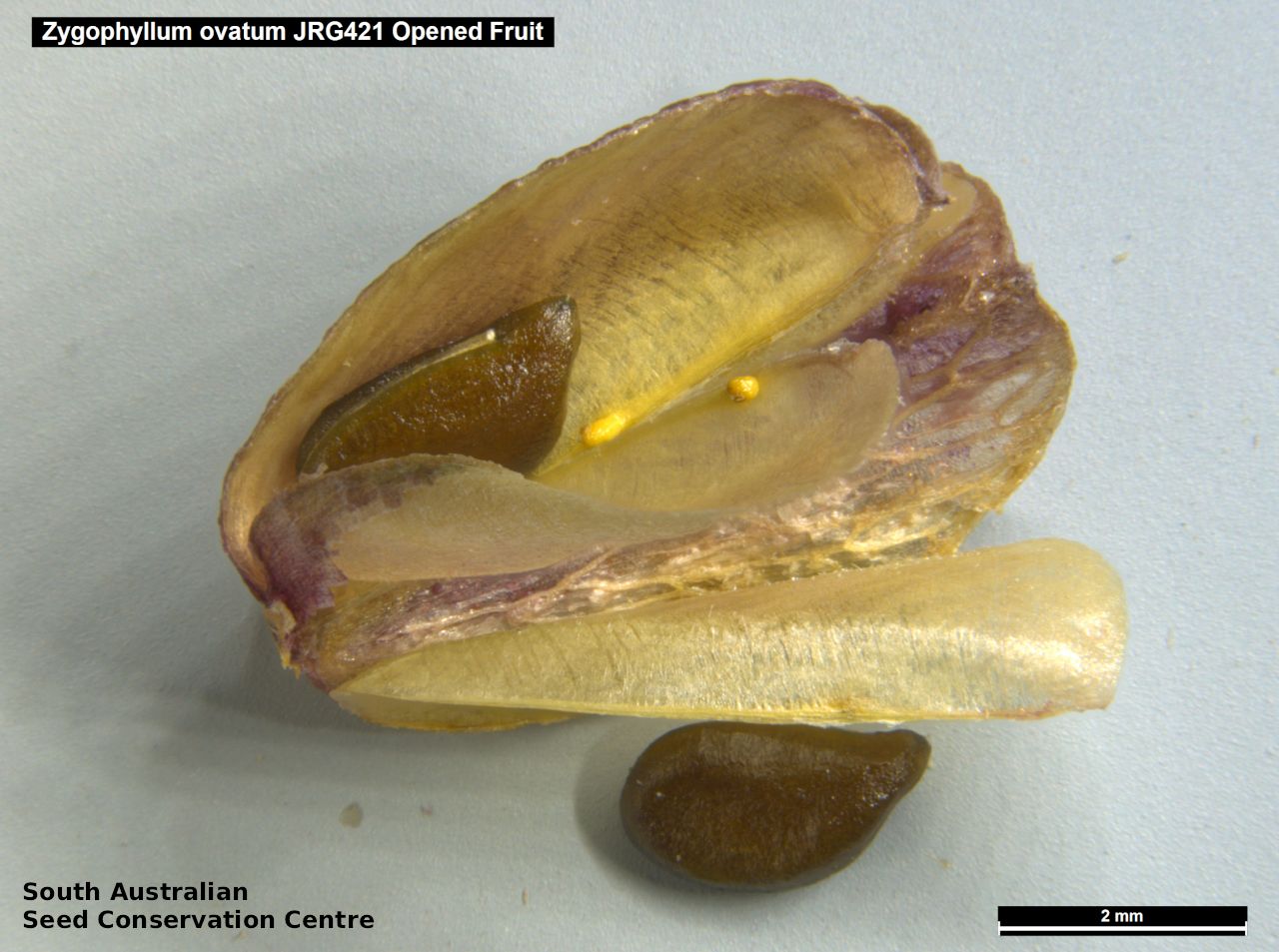
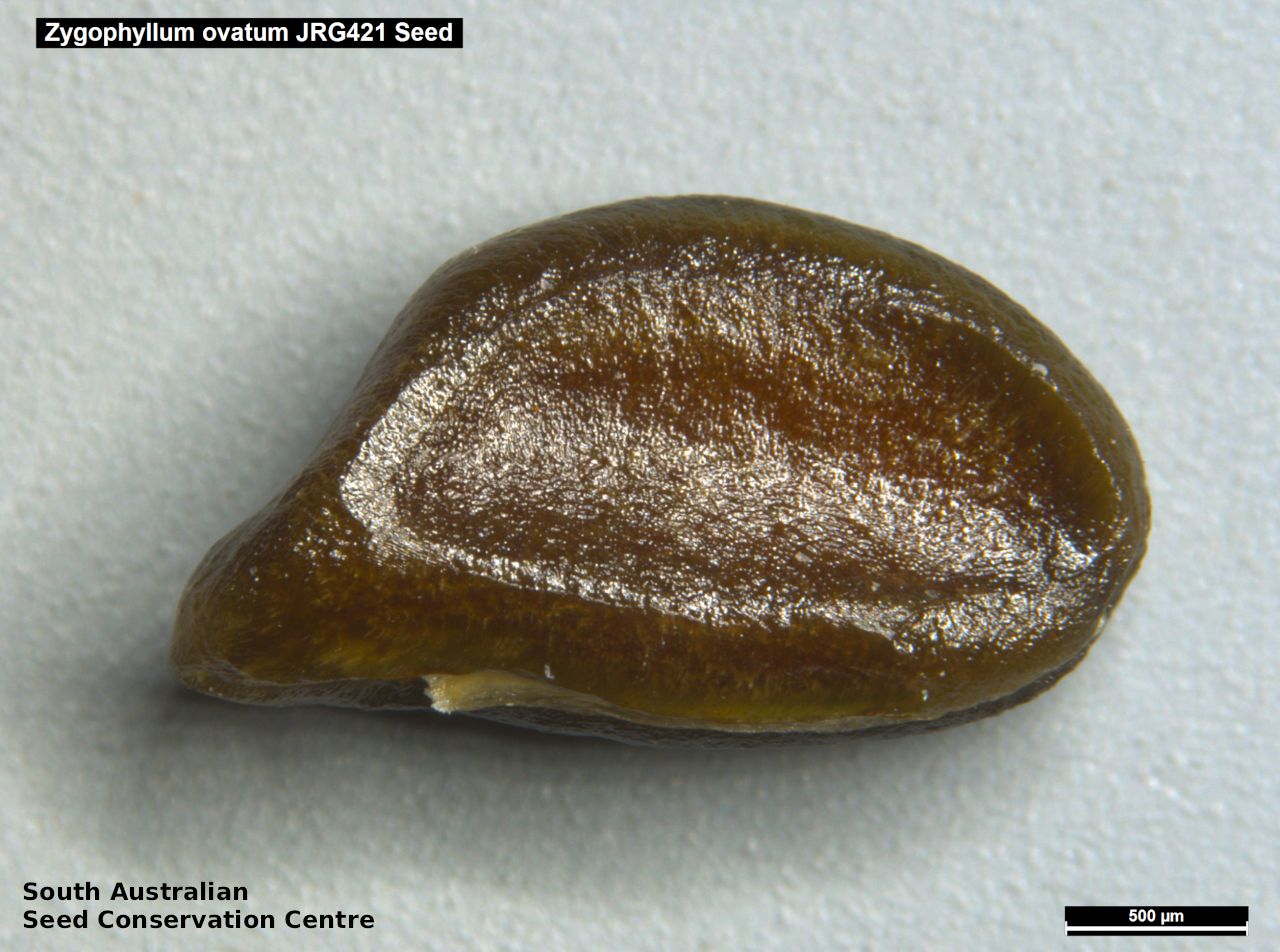
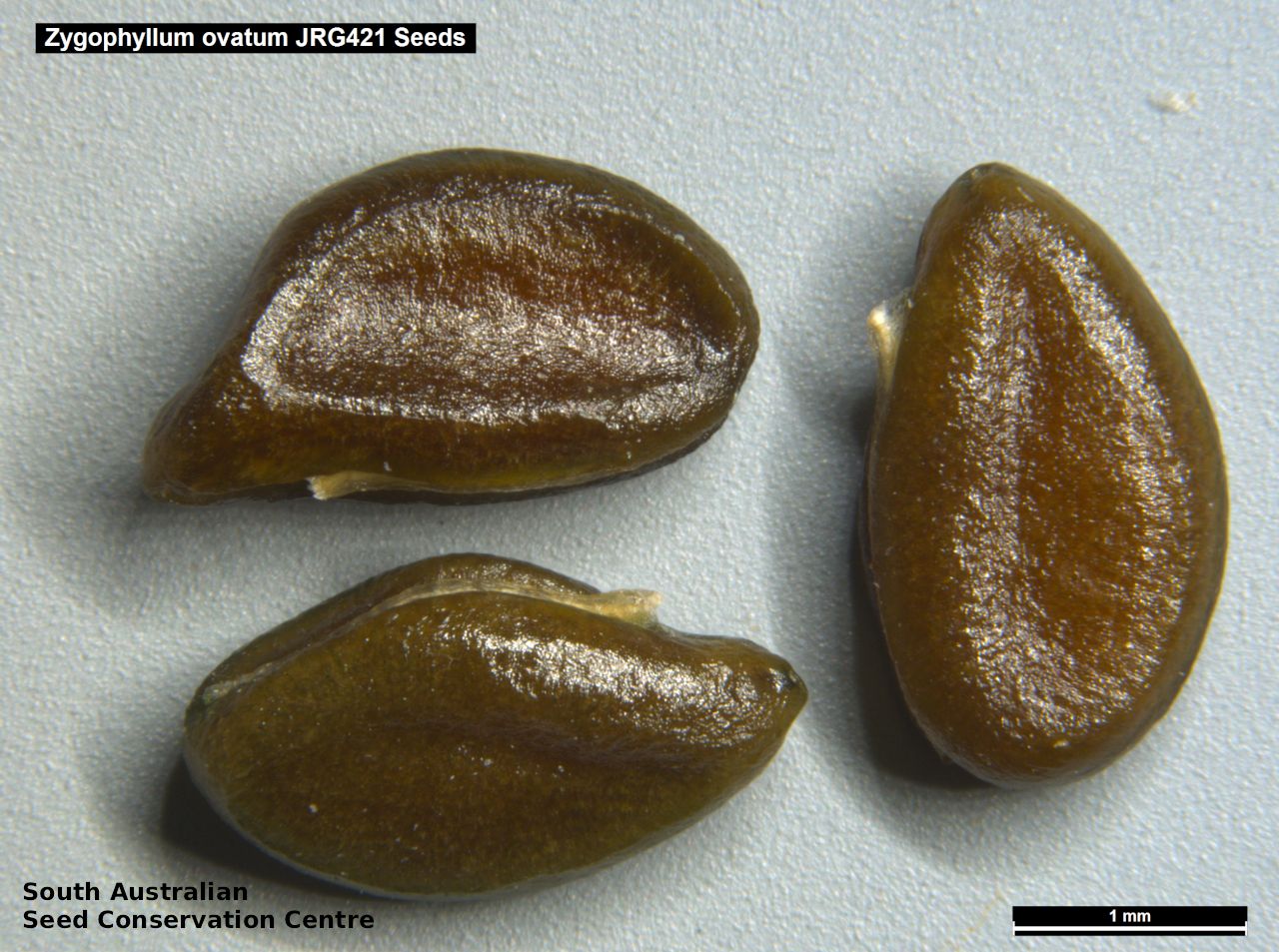


Botanical art
Prior names
Zygophyllum ovatum
Zygophyllum iodocarpum var. bilobum
Common names
Dwarf Twinleaf
Etymology
Roepera (formally Zygophyllum which is from the Greek 'zygon' meaning pair and 'phyllon' meaning leaf; referring to the pair of leaflets making up each leaf) is named after Johannes August Christian Roeper (1801 -1885), a German botanist and physician. Ovata from the Latin 'ovatus' meaning ovate or egg-shaped; referring to the shape of its fruit.
Distribution and status
Found mainly across the middle part of South Australia, growing on calcareous loam and red-brown sandy soils. Also found in Western Australia, Northern Territory, New South Wales and Victoria. Native. Common in South Australia. Uncommon in Victoria. Common in the other states.
Herbarium regions: North Western, Lake Eyre, Nullarbor, Gairdner-Torrens, Flinders Ranges, Eastern, Eyre Peninsula, Northern Lofty, Murray, Yorke Peninsula
AVH map: SA distribution map (external link)
Plant description
Small erect or ascending annual herb to 25 cm high. Leaves to 15 m long, leaflets narrow-oblong to linear, to 10 mm long and 5 mm wide, continuous with the petiole, apex usually slightly emarginate. Inflorescence on a very short pedicel with tiny white-green flowers. Flowering between July and October. Fruits are red-yellow ovoid-oblong capsule to 8 mm long, bluntly 4-angled usually with 2 seeds in each cell, drooping on short stalk. Seeds are brown ovoid to 2.5 mm long and 1.5 mm wide. Seed embryo type is spatulate fully developed.
Seed collection and propagation
Collect seeds between September and December. Collect semi-dried and dried capsules by running your hands through the stems of the plant. Mature fruits will come off easily and will have a hard and dark seed inside each segment. Place the capsules in a tray and leave to dry for 1 to 2 weeks, depending on how green the fruit is. Then rub the dried capsules to dislodge the seeds. Use a sieve to remove the unwanted material. Store the seeds with a desiccant such as dried silica beads or dry rice, in an air tight container in a cool and dry place. Seed viability is usually high.
| Location | No. of seeds (weight grams) | Number of plants | Date collected | Collection number Collection location | Date stored | % Viability | Storage temperature |
|---|---|---|---|---|---|---|---|
| BGA MSB | 5,500 (8.55 g) 5,500 (8.55 g) | 40 | 15-Oct-2007 | TST189 Eyre Peninsula | 19-Sep-2008 | 95% | -18°C |
Number of plants: This is the number of plants from which the seeds were collected.
Collection location: The Herbarium of South Australia's region name.
% Viability: Percentage of filled healthy seeds determined by a cut test or x-ray.